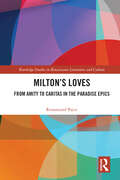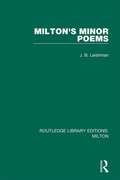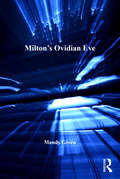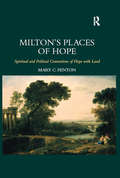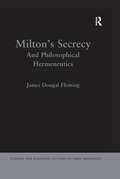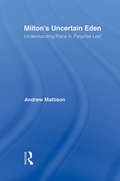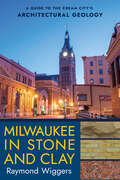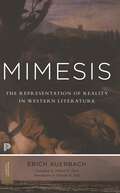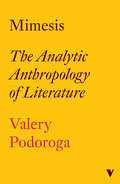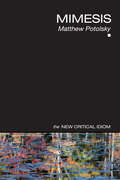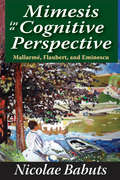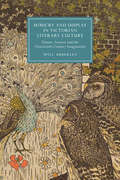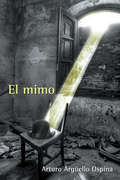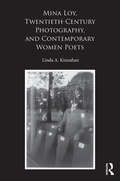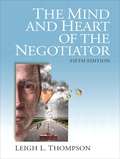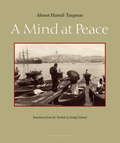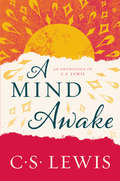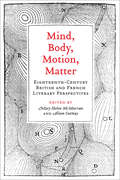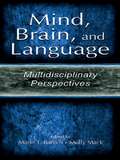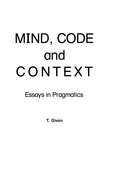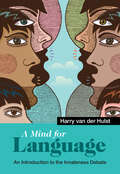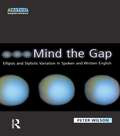- Table View
- List View
Milton's Loves: From Amity to Caritas in the Paradise Epics (Routledge Studies in Renaissance Literature and Culture)
by Rosamund PaiceThis book is about the multiple loves of Paradise Lost and Paradise Regained: sanctioned loves and outlawed loves, sincere loves and false loves, Christian loves, classical loves, humanist loves, and love as emotion. In showing how these loves motivate the most significant actions of the Paradise epics, it reveals Milton to have made creative use of the tensions between philosophical ideals, social conventions, and the rather messier ways in which love emerges in practice. Love, so central to Milton’s view of Edenic joy and obedience to God, unsettles earthly and heavenly communities and is the origin of Miltonic transgression. Milton’s Loves sheds new light on some of the most prominent concerns of Milton scholarship, including why Milton’s God is so difficult for readers to connect to, Satan’s apparent heroism, Milton’s radical theology, and the nature of Milton’s muse. It is a book that will appeal to students and scholars of Milton and early modern studies more broadly and is structured in a way that will aid easy reference.
Milton's Minor Poems (Routledge Library Editions: Milton #6)
by J. B. LeishmanFirst published in 1969. These nine lectures written by the distinguished scholar J. B. Leishman examines the various themes, context and structure of Milton’s poetry, with particular focus on L’Allegro, Il Penseroso and Lycidas. This title will be of great interest to students of John Milton and English Literature.
Milton's Ovidian Eve
by Mandy GreenMilton's Ovidian Eve presents a fresh and thorough exploration of the classical allusions central to understanding Paradise Lost and to understanding Eve, one of Milton's most complex characters. Mandy Green demonstrates how Milton appropriates narrative structures, verbal echoes, and literary strategies from the Metamorphoses to create a subtle and evolving portrait of Eve. Each chapter examines a different aspect of Eve's mythological figurations. Green traces Eve's development through multiple critical lenses, influenced by theological, ecocritical, and feminist readings. Her analysis is gracefully situated between existing Milton scholarship and close textual readings, and is supported by learned references to seventeenth-century writing about women, the allegorical tradition of Ovidian commentary, hexameral literature, theological contexts and biblical iconography. This detailed scholarly treatment of Eve simultaneously illuminates our understanding of the character, establishes Milton's reading of Ovid as central to his poetic success, and provides a candid synthesis and reconciliation of earlier interpretations.
Milton's Places of Hope: Spiritual and Political Connections of Hope with Land
by Mary C. FentonIn early modern culture and in Milton's poetry and prose, this book argues, the concept of hope is intrinsically connected with place and land. Mary Fenton analyzes how Milton sees hope as bound both to the spiritual and the material, the internal self and the external world. Hope, as Fenton demonstrates, comes from commitment to literal places such as the land, ideological places such as the "nation," and sacred, interior places such as the human soul. Drawing on an array of materials from the seventeenth century, including emblems, legal treatises, political pamphlets, and prayer manuals, Fenton sheds light on Milton's ideas about personal and national identity and where people should place their sense of power and responsibility; Milton's politics and where he thought the English nation was and where it should be heading; and finally, Milton's theology and how individuals relate to God.
Milton's Secrecy: And Philosophical Hermeneutics (Literary and Scientific Cultures of Early Modernity)
by James Dougal FlemingScientific modernity treats interpretation as a matter of discovery. Discovery, however, may not be all that matters about interpretation. In Milton's Secrecy, J. D. Fleming argues that the poetry and prose of John Milton (1608-1674) are about the presentation of a radically different hermeneutic model. This is based on openness within language, rather than on secrets within the world. Milton's representations of meaning are exoteric, not esoteric; recognitive, not inventive. Milton's Secrecy places its titular subject in opposition to the epistemology of modern natural science, and to the interpretative assumptions that science supports. At the same time, the book places Milton within early modern contexts of interpretation and knowledge. Drawing on Renaissance Neoplatonism, Tudor-Stuart ideology, and the Calvinist theory of conscience, Milton's Secrecy argues that the attempt to theorize interpretation without discovery is not unorthodox within early modern English culture. If anything, Milton's hostility to secrecy and discovery aligns him with his culture's ethical and hermeneutic ideal. Milton's Secrecy provides an historical framework for considering the theoretical validity of this ideal, by aligning it with the philosophical hermeneutics of Hans-Georg Gadamer.
Milton's Uncertain Eden: Understanding Place in Paradise Lost (Studies in Major Literary Authors)
by Andrew MattisonThis study describes a variety of ways of thinking about place in the Renaissance and in Paradise Lost. Despite coming from different perspectives, they have in common the idea that the difficulty of the relationship of reciprocity that poetic subjects often expect from their environment destabilizes those subjects’ understanding, not only of environment, but of themselves. The study explores destabilization as it affects aspects of the poem from Adam’s sense of the landscape of Eden and the meaning of the Fall itself, to the relationship the ambiguous landscapes of Paradise Lost create between Adam and Eve, the poet and the reader; all of whom are struggling to make sense of the same problematically described places. To a surprisingly large extent, the description of prelapsarian Eden and the events that go on within it have in common a failed attempt to understand the nature of the surroundings. In observing the centrality and difficultly of this poetic discourse of place, the problem of place is found at the very heart of the Fall.
Milton’s Visual Imagination
by Stephen B. DobranskiCritics have traditionally found fault with the descriptions and images in John Milton's poetry and thought of him as an author who wrote for the ear more than the eye. In Milton's Visual Imagination, Stephen B. Dobranski proposes that, on the contrary, Milton enriches his biblical source text with acute and sometimes astonishing visual details. He contends that Milton's imagery - traditionally disparaged by critics - advances the epic's narrative while expressing the author's heterodox beliefs. In particular, Milton exploits the meaning of objects and gestures to overcome the inherent difficulty of his subject and to accommodate seventeenth-century readers. Bringing together Milton's material philosophy with an analysis of both his poetic tradition and cultural circumstances, this book is a major contribution to our understanding of early modern visual culture as well as of Milton's epic.
Milwaukee in Stone and Clay: A Guide to the Cream City's Architectural Geology
by Raymond WiggersMilwaukee in Stone and Clay follows directly in the footsteps of Raymond Wiggers's previous award-winning book, Chicago in Stone and Clay. It offers a wide-ranging look at the fascinating geology found in the building materials of Milwaukee County's architectural landmarks. And it reveals the intriguing and often surprising links between science, art, and engineering. Laid out in two main sections, the book first introduces the reader to the fundamentals of Milwaukee's geology and its amazing prehuman history, then provides a site-by-site tour guide. Written in an engaging, informal style, this work presents the first in-depth exploration of the interplay among the region's most architecturally significant sites, the materials they're made of, and the sediments and bedrock they're anchored in. Raymond Wiggers crafted Milwaukee in Stone and Clay as an informative and exciting overview of this city. His two decades of experience leading architectural-geology tours have demonstrated the popularity of this approach and the subject matter.
Mimesis: The Representation of Reality in Western Literature - New and Expanded Edition (Princeton Classics #1)
by Erich Auerbach Edward W. SaidThe classic book that has taught generations how to read Western literatureMore than half a century after its translation into English, Erich Auerbach&’s Mimesis remains a masterpiece of literary criticism. A brilliant display of erudition, wit, and wisdom, his exploration of how great European writers from Homer to Virginia Woolf depict reality has taught generations how to read Western literature.A German Jew who was forced out of his professorship at the University of Marburg in 1935, Auerbach left for Turkey, where he taught in Istanbul. There he wrote Mimesis, publishing it in German after the war. Displaced as he was, Auerbach produced a work of great erudition that contains no footnotes, basing his arguments instead on searching, illuminating readings of key passages from his primary texts. His aim was to show how, from antiquity to modernity, literature progresses toward ever more naturalistic and democratic forms of representation. Ranging over works in Greek, Latin, Spanish, French, Italian, German, and English, Auerbach uses his remarkable skills in philology and comparative literature to present an optimistic view of Western history and culture and to refute any narrow form of nationalism or chauvinism.This expanded Princeton Classics edition of Mimesis includes a substantial introduction by Edward Said as well as an essay in which Auerbach responds to his critics.
Mimesis: The Analytic Anthropology of Literature
by Valery PodorogaGround-breaking work of philosophy and Russian Literature: translated for the first timeValery Podoroga was one of the most important thinkers of his generation. Here his most famous work is translated into English for the first time. In it he gives a panorama view of Russian writing, focusing in on the work of Nikolai Gogol, Fyodor Dostoevsky and Andrei Bely. He identifies these authors as pioneers in creating an 'other literature'. This constituted a new form of mimesis or vision of the world, in opposition to the Imperial and national myths.In Mimesis Podoroga develops and elaborates his analytic anthropological approach on these authors with startling effect, excavating the identities and forms of Russian literature, and society. He places an emphasis on how a literary work is a process of world building: both internally by creating a fictive world, but also how it reflects the wider world in which it was produced, and the power with which it changes the world. Finally, the literary work&’s ability to exist in a time that is other than its own time, a time where it does not have a contemporary reader and an author who exercises his will, but where it nonetheless continues to mean something.Mimesis is rightly seen as the masterwork of one of the world's leading literary thinkers.
Mimesis (The New Critical Idiom)
by Matthew PotolskyA topic that has become increasingly central to the study of art, performance and literature, the term mimesis has long been used to refer to the relationship between an image and its ‘real’ original. However, recent theorists have extended the concept, highlighting new perspectives on key concerns, such as the nature of identity. Matt Potolsky presents a clear introduction to this potentially daunting concept, examining: the foundations of mimetic theory in ancient philosophy, from Plato to Aristotle three key versions of mimesis: imitatio or rhetorical imitation, theatre and theatricality, and artistic realism the position of mimesis in modern theories of identity and culture, through theorists such as Freud, Lacan, Girard and Baudrillard the possible future of mimetic theory in the concept of ‘memes’, which connects evolutionary biology and theories of cultural reproduction. A multidisciplinary study of a term rapidly returning to the forefront of contemporary theory, Mimesis is a welcome guide for readers in such fields as literature, performance and cultural studies.
Mimesis in a Cognitive Perspective: Mallarme, Flaubert, and Eminescu
by Nicolae BabutsMimesis is a critical and philosophical term going back to Aristotle. It carries a wide range of meanings, including imitation, representation, mimicry, the act of expression, and the presentation of self. In modern literary criticism, mimesis has received renewed attention in the last two or three decades and been subject to wide-ranging interpretations. Nicolae Babuts looks at the concept of mimesis from a cognitive perspective. He identifies two main strands: the mimetic relation of art and poetry to the world, defined in terms of reference to an external reality, and the importance of memory in the making of plots or storytelling.Babuts suggests that there is a material identity we cannot know beyond the limits of our senses and intellect and a symbolic or coded identity that is processed by memory. All writers, including Mallarme in his esoteric poetry, Flaubert in his realist narratives, and Mihai Eminescu, the Romanian poet, in his romantic poems, rely on mimetic strategies to link the two identities: the images in memory to the outside reality. All order their narratives in accordance with the dynamics of memory. Babuts describes this phenomenon with great insight, showing how new traditions are formed.
Mimicry and Display in Victorian Literary Culture: Nature, Science and the Nineteenth-Century Imagination (Cambridge Studies in Nineteenth-Century Literature and Culture #123)
by Will AbberleyRevealing the web of mutual influences between nineteenth-century scientific and cultural discourses of appearance, Mimicry and Display in Victorian Literary Culture argues that Victorian science and culture biologized appearance, reimagining imitation, concealment and self-presentation as evolutionary adaptations. Exploring how studies of animal crypsis and visibility drew on artistic theory and techniques to reconceptualise nature as a realm of signs and interpretation, Abberley shows that in turn, this science complicated religious views of nature as a text of divine meanings, inspiring literary authors to rethink human appearances and perceptions through a Darwinian lens. Providing fresh insights into writers from Alfred Russel Wallace and Thomas Hardy to Oscar Wilde and Charlotte Perkins Gilman, Abberley reveals how the biology of appearance generated new understandings of deception, identity and creativity; reacted upon narrative forms such as crime fiction and the pastoral; and infused the rhetoric of cultural criticism and political activism.
El mimo
by Arturo Argüello«La Plaza Bolívar de Bogotá es el escenario donde dos almas separadas y atormentadas, aunque unidas por un intenso amor, sobreviven el día a día de los artistas callejeros de la capital colombiana.» <P><P>Con nostalgias del cálido y mágico Caribe, con sus diferentes pasados y recuerdos felices e infelices, un mimo mulato y analfabeto y una poetisa, junto a un titiritero, un payaso, un fotógrafo, un bailarín y otros eternos buscadores de aplausos y monedas, transmiten desde su música, actuación, baile y poesía su propia visión de las miserias, vicios, pasiones y alegrías de la vida cotidiana. <P> El reencuentro y la unión sólo serán posibles si lo permiten estas intensas y a veces incontrolables pasiones.
Min and Fin (Word Family Readers)
by Liza CharlesworthMin and Fin are twins! Meet them both in this terrific tale that teaches lots and lots of -in words.
Mina Loy, Twentieth-Century Photography, and Contemporary Women Poets
by Linda A. KinnahanIn Mina Loy, Twentieth-Century Photography, and Contemporary Women Poets, Linda A. Kinnahan explores the making of Mina Loy’s late modernist poetics in relation to photography’s ascendance, by the mid-twentieth century, as a distinctively modern force shaping representation and perception. As photography develops over the course of the century as an art form, social tool, and cultural force, Loy’s relationship to a range of photographic cultures emerging in the first half of the twentieth century suggests how we might understand not only the intriguing work of this poet, but also the shaping impact of photography and new technologies of vision upon modernist poetics. Framing Loy’s encounters with photography through intersections of portraiture, Surrealism, fashion, documentary, and photojournalism, Kinnahan draws correspondences between Loy’s late poetry and visual discourses of the body, urban poverty, and war, discerning how a visual rhetoric of gender often underlies these mappings and connections. In her final chapter, Kinnahan examines two contemporary poets who directly engage the camera’s modern impact –Kathleen Fraser and Caroline Bergvall – to explore the questions posed in their work about the particular relation of the camera, the photographic image, and the construction of gender in the late twentieth century.
The Mind and Heart of the Negotiator (5th Edition)
by Leigh ThompsonDelve into the mind and heart of the negotiator in order to enhance negotiation skills. The Mind and Heart of the Negotiator is dedicated to negotiators who want to improve their ability to negotiate--whether in multimillion-dollar business deals or personal interactions. This text provides an integrated view of what to do and what to avoid at the bargaining table, facilitated by an integration of theory, scientific research, and practical examples. This edition contains new examples and chapter-opening sections, as well as more than a hundred new scientific articles on negotiations.
A Mind at Peace
by Erdag Goknar Ahmet Hamdi TaniparSurviving the childhood trauma of his parents' untimely deaths in the early skirmishes of World War I, Mümtaz is raised and mentored in Istanbul by his cousin Ihsan and his cosmopolitan family of intellectuals. Having lived through the tumultuous cultural revolutions following the fall of the Ottoman Empire and the rise of the early Turkish Republic, each is challenged by the difficulties brought about by such rapid social change.The promise of modernization and progress has given way to crippling anxiety rather than hope for the future. Fragmentation and destabilization seem the only certainties within the new World where they now find themselves. Mümtaz takes refuge in the fading past, immersing himself in literature and music, but when he falls in love with Nuran, a complex woman with demanding relatives, he is forced to confront the challenges of the World at large. Can their love save them from the turbulent times and protect them from disaster, or will inner obsessions, along with powerful social forces seemingly set against them, tear the couple apart?A Mind at Peace, originally published in 1949 is a magnum opus, a Turkish Ulysses and a lyrical homage to Istanbul. With an innate awareness of how dueling cultural mentalities can lead to the distress of divided selves, Tanpinar gauges this moment in history by masterfully portraying its register on the layered psyches of his Istanbulite characters.
A Mind Awake: An Anthology of C. S. Lewis
by C. S. LewisA repackaged edition of the revered author’s anthology featuring hundreds of selections from his writings, organized by the main themes of Christian faith.C. S. Lewis—the great British writer, scholar, lay theologian, broadcaster, Christian apologist, and bestselling author of Mere Christianity, The Screwtape Letters, The Great Divorce, The Chronicles of Narnia, and many other beloved classics—wrote widely on all the main themes of Christian faith: God, Jesus, the Trinity, Scripture, sin, evil, nature, sex, the Christian life, prayer, faith, compassion, guilt, and forgiveness. A Mind Awake includes hundreds of short excerpts, curated from the full range of his works and organized them by theme. Useful as both a reference work and as a devotional resource, A Mind Awake contains hidden gems of wisdom that are provocative, whimsical, and insightful, and is an ideal introduction to this towering figure who has profoundly influenced modern Christianity.
Mind, Body, Motion, Matter: Eighteenth-Century British and French Literary Perspectives
by Alison Conway Mary Helen McmurranMind, Body, Motion, Matter investigates the relationship between the eighteenth century's two predominant approaches to the natural world - mechanistic materialism and vitalism - in the works of leading British and French writers such as Daniel Defoe, William Hogarth, Laurence Sterne, the third Earl of Shaftesbury and Denis Diderot. Focusing on embodied experience and the materialization of thought in poetry, novels, art, and religion, the literary scholars in this collection offer new and intriguing readings of these canonical authors. Informed by contemporary currents such as new materialism, cognitive studies, media theory, and post-secularism, their essays demonstrate the volatility of the core ideas opened up by materialism and the possibilities of an aesthetic vitalism of form.
Mind, Brain, and Language: Multidisciplinary Perspectives
by Marie T. Banich Molly MackMuch of the groundbreaking work in many fields is now occurring at the intersection of traditional academic disciplines. This development is well demonstrated in this important and unique volume, which offers a multidisciplinary view of current findings and cutting-edge issues involving the relationship between mind, brain, and language. Marie T. Banich and Molly Mack have edited a collection of 11 invited chapters from top researchers (and have contributed two of their own chapters) to create a volume organized around five major topics--language emergence, influence, and development; models of language and language processing; the neurological bases of language; language disruption and loss; and dual-language systems. Topics range from the evolution of language and child-language acquisition to brain imaging and the "bilingual brain." To maintain continuity throughout, care has been taken to ensure that the chapters have been written in a style accessible to scholars across many disciplines, from anthropology and psycholinguistics to cognitive science and neurobiology. Because of its depth and breadth, this book is appropriate both as a textbook in a variety of undergraduate and graduate-level courses and as a valuable resource for researchers and scholars interested in further understanding the background of and current developments in our understanding of the mind/brain/language relationship.
Mind, Brain and Narrative
by Anthony J. Sanford Catherine EmmottNarratives enable readers to vividly experience fictional and non-fictional contexts. Writers use a variety of language features to control these experiences: they direct readers in how to construct contexts, how to draw inferences and how to identify the key parts of a story. Writers can skilfully convey physical sensations, prompt emotional states, effect moral responses and even alter the readers' attitudes. Mind, Brain and Narrative examines the psychological and neuroscientific evidence for the mechanisms which underlie narrative comprehension. The authors explore the scientific developments which demonstrate the importance of attention, counterfactuals, depth of processing, perspective and embodiment in these processes. In so doing, this timely, interdisciplinary work provides an integrated account of the research which links psychological mechanisms of language comprehension to humanities work on narrative and style.
Mind, Code and Context: Essays in Pragmatics (Neuropsychology and Neurolinguistics Series)
by T. GivonScholars concerned with the phenomenon of mind have searched through history for a principled yet non-reductionist approach to the study of knowledge, communication, and behavior. Pragmatics has been a recurrent theme in Western epistemology, tracing itself back from pre-Socratic dialectics and Aristotle's bio- functionalism, all the way to Wittgenstein's content-dependent semantics. This book's treatment of pragmatics as an analytic method focuses on the central role of context in determining the perception, organization, and communication of experience. As a bioadaptive strategy, pragmatics straddles the middle ground between absolute categories and the non-discrete gradation of experience, reflecting closely the organism's own evolutionary compromises. In parallel, pragmatic reasoning can be shown to play a pivotal role in the process of empirical science, through the selection of relevant facts, the abduction of likely hypotheses, and the construction of non-trivial explanations. In this volume, Professor Givon offers pragmatics as both an analytic method and a strategic intellectual framework. He points out its relevance to our understanding of traditional problems in philosophy, anthropology, linguistics, cognitive psychology, neuro-biology, and evolution. Finally, the application of pragmatics to the study of the mind and behavior constitutes an implicit challenge to the current tenets of artificial intelligence.
Mind The Gap: Ellipsis and Stylistic Variation in Spoken and Written English (Textual Explorations)
by Peter WilsonWe rarely speak or even write in the complete sentences that are often held to be the ideal form of linguistic communication. Language is, in fact, full of gaps, because speakers and writers operate in contexts which allow bits of language to be understood rather than expressed. This book systematically analyses this inherent gappiness of language, known as ellipsis, and provides an account of the different contexts, both linguistic and situational, which affect its use. Peter Wilson draws on a wide variety of examples of spoken and written English, and both literary and non-literary to present a comprehensive classification of elliptical language that ranges from the conversational fragment and the advertisement to the dialogue of Shakespeare and imagist poetry. Mind the Gap shows how ellipsis is a feature of major structural and stylistic importance to our understanding of spoken and written language, and will be of interest to undergraduate students of linguistics, literature, communication and the interrelations between them..
